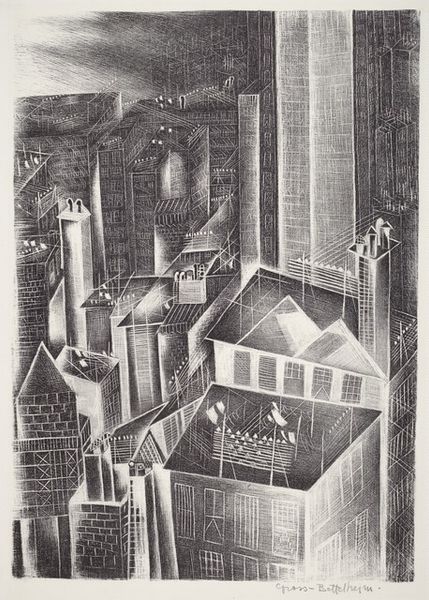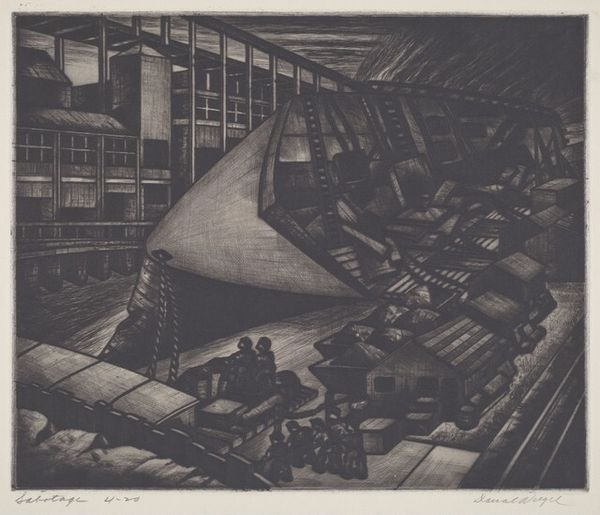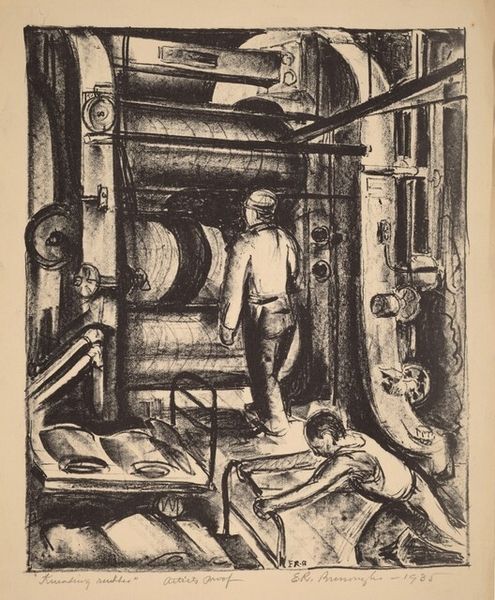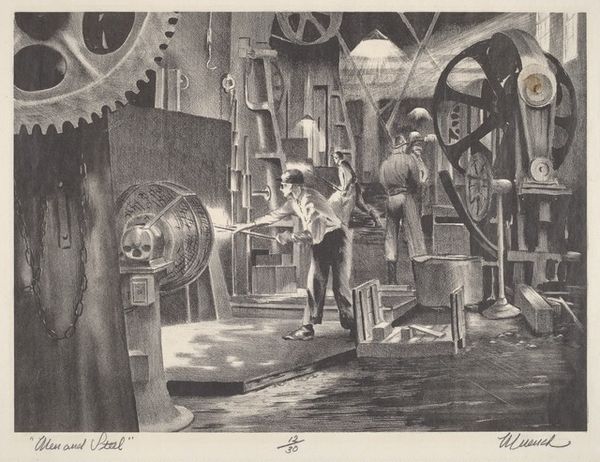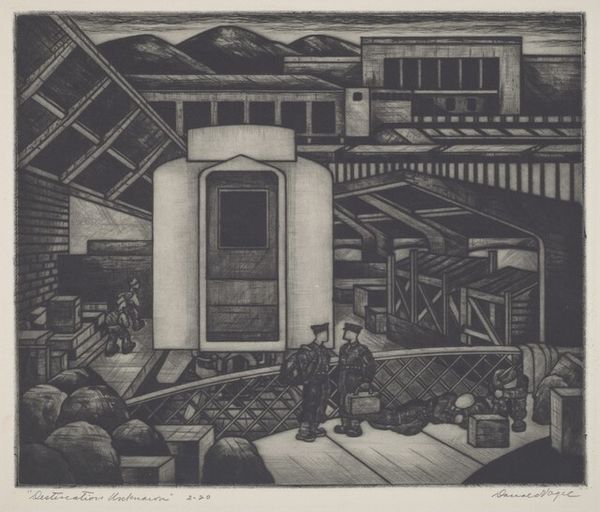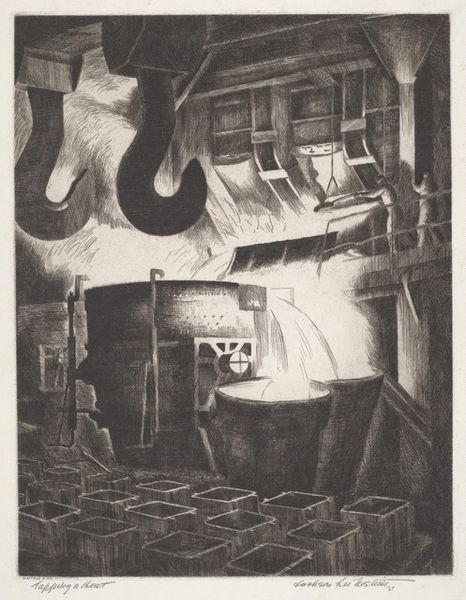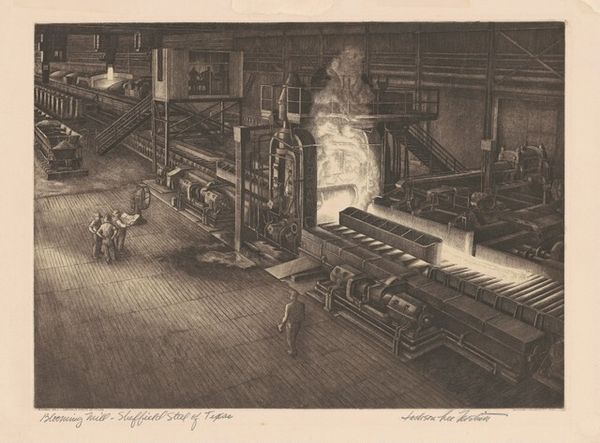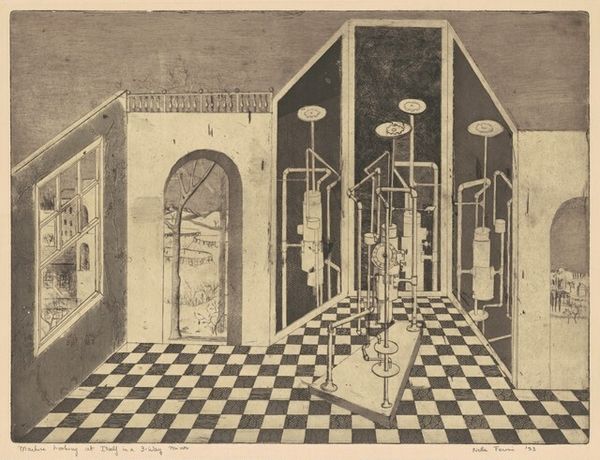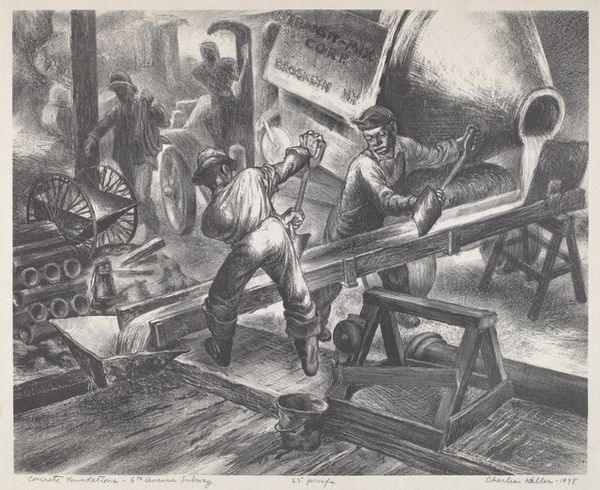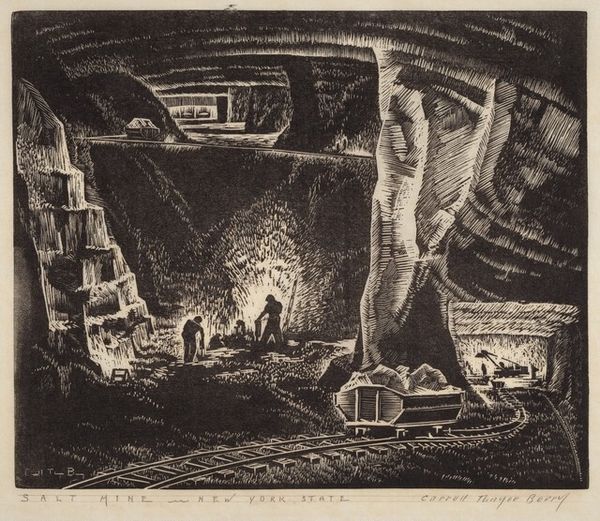
print, etching
# print
#
etching
#
landscape
#
genre-painting
#
modernism
#
realism
Dimensions: plate: 22.8 × 30 cm (9 × 11 13/16 in.) sheet: 31.5 × 37 cm (12 3/8 × 14 9/16 in.)
Copyright: National Gallery of Art: CC0 1.0
Curator: Jackson Lee Nesbitt’s etching, "Plate Mill," from 1938, offers a glimpse into the industrial heartland of America during the late Depression era. What strikes you first about it? Editor: The overwhelming feeling is one of weight. Not just physical—look at those hulking machines, and the palpable strain in the workers’ postures—but also of societal burden, that grit and grime representing economic hardship and a certain class of people bearing it all. Curator: Indeed. This print arrives during a period of profound anxiety about the state of the working class, the conditions within factories. There’s a conscious depiction of labor, placing it within a lineage of realist traditions but with the visual language of modernism influencing the clean lines and emphasis on form. Nesbitt’s vantage point suggests a sort of observation, almost removed and elevated from the immediate scene. Editor: Right. It reminds me of Cyclopean imagery—a scene ripped straight from classical mythology or some dystopic futurist vision. Those industrial mechanisms dominate; they’re like slumbering beasts, dictating human actions. Consider those stylized figures laboring almost anonymously within this grimy theater; they mirror an ancient trope. Their small stature serves as a symbol for their subservient positions within that industrial age. Curator: Absolutely. And consider the whiteness of the metal sheet being rolled; it acts as both a visual focus, drawing the eye immediately, but also as a symbolic representation of unrealized potential. The raw material processed by industry carries with it both promise and the exhaustion embedded in labor itself. Editor: There’s almost a sacred element there—as if the artist is subtly highlighting both the potential of creation and inherent risk. One misstep, and what looks pristine turns volatile. We must remember that these people risk everything: their identities are intrinsically connected to their labor, both in terms of material sustenance and their existence as social subjects. Curator: It's this tension—the promise versus the stark realities of industrial work—that makes the print so compelling, a stark portrait reflecting the anxieties of a changing world. Editor: I concur, seeing beyond its face value, the artwork stands as a historical record as well as cultural criticism which promotes important issues regarding the working classes in that specific time.
Comments
No comments
Be the first to comment and join the conversation on the ultimate creative platform.

